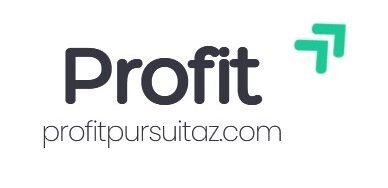How to Find the Best Keywords for SEO: A Step-by-Step Guide
Finding the best keywords for SEO is crucial. They drive traffic to your site.
Understand your audience’s search behavior to succeed in digital marketing. Keywords act as the bridge between what people search and what you offer. By mastering keyword research, you can improve your site’s visibility. This process involves understanding your market, identifying popular terms, and evaluating their relevance.
You need to think like your audience. What are they searching for? How can you meet their needs? The right keywords can connect you with your target audience effectively. Let’s explore how you can find those perfect keywords to enhance your SEO strategy.
Introduction To Seo Keywords
Understanding SEO keywords is crucial for digital success. They are the words users type into search engines. These words help websites appear in search results. Selecting the right keywords can elevate your site’s visibility. It connects your content with the audience’s needs.
Importance Of Keywords
Keywords are the bridge between your content and search queries. They guide search engines to your site. Good keywords improve your site’s relevance. They attract the right audience. Choosing impactful keywords can boost traffic. It helps businesses reach their goals online.
Impact On Search Rankings
SEO keywords directly affect search rankings. Search engines evaluate them to rank sites. Strong keywords can enhance your position in results. They make your site more competitive. Using well-researched keywords improves discoverability. It leads to higher visibility and more clicks.
Identifying Your Target Audience
Identifying your target audience is a crucial step in finding the best keywords for SEO. Knowing who you are reaching out to can make or break your strategy. Imagine trying to sell winter coats to a tropical audience; it simply won’t click. Similarly, if you’re crafting content without understanding your audience, your efforts may not yield the desired results. Start by pinpointing who your audience is, and then tailor your keyword strategy to their needs and interests.
Understanding User Intent
Understanding user intent is all about predicting what your audience is thinking when they search online. Are they looking to buy, learn, or simply browse? Each intent has different implications for your keyword choices. Consider a personal experience: I once optimized a blog post around “best hiking shoes,” targeting users intending to purchase. Traffic shot up when users searching for buying advice landed on my page. You too can do this by focusing on action-oriented keywords that align with what your audience wants.
Analyzing Audience Demographics
Knowing your audience demographics is like having a compass for your keyword strategy. These demographics—age, location, interests—can guide your decisions. If you’re targeting young tech-savvy adults, keywords related to the latest gadgets will resonate. Use tools like Google Analytics to gather data on who visits your site. You might find surprising insights, like a high number of visitors from a specific region. Tailor your keywords to these findings for better connection and engagement.
By identifying your target audience, you are setting the foundation for a successful SEO strategy. Think of it as crafting a message that directly speaks to those who are most likely to listen. Are you ready to dive deeper into your audience’s mind and create compelling content that attracts them?
Conducting Keyword Research
Conducting keyword research is a fundamental step in enhancing your SEO strategy. It’s the foundation upon which you build your visibility online. Without the right keywords, your content may never reach its intended audience. But how do you find these golden terms? Let’s break down the process into actionable steps.
Using Keyword Tools
Keyword tools are your best friends in the quest for the right keywords. They help you identify terms that people are actually searching for. Tools like Google Keyword Planner, SEMrush, and Ahrefs provide valuable insights into search volume, keyword difficulty, and more.
Imagine you’re running a blog about gardening. You type “gardening tips” into a keyword tool, and it suggests related phrases like “organic gardening tips” or “urban gardening ideas.” These tools can open up new avenues for your content, ensuring it resonates with what people are searching for.
But don’t just rely on the tools. Pair their insights with your intuition and understanding of your niche. What might your audience be curious about next? Use the tools as a guide, not the gospel.
Exploring Competitor Keywords
Competitor analysis is another powerful strategy in keyword research. Look at what keywords your competitors are ranking for. This can provide inspiration and help you identify gaps in their strategy that you can fill.
You might discover that a competitor ranks high for “beginner gardening tips,” but not for “advanced gardening techniques.” This insight can guide your content strategy and help you attract a more experienced audience.
Consider using tools like Moz or SpyFu to see which keywords drive traffic to your competitor’s site. This can give you a clearer picture of the competitive landscape and help you carve out your niche.
Have you ever wondered why some blogs seem to skyrocket while others struggle? Often, it’s not about writing more content, but writing the right content. Effective keyword research is your first step towards joining the ranks of the successful. So, are you ready to dive in and discover the keywords that will take your SEO to the next level?
Shortlisting Relevant Keywords
Identifying the right keywords boosts your SEO strategy. Focus on relevance and search volume to attract visitors. Tools like Google Keyword Planner can help. Analyze competitors to find opportunities. Prioritize keywords that match user intent and enhance visibility.
Finding the best keywords for SEO can feel like searching for a needle in a haystack. However, shortlisting relevant keywords is a crucial step that can make or break your SEO strategy. By focusing on the right keywords, you can attract the audience that truly matters to your business. ###Assessing Search Volume
Search volume tells you how many people are searching for a particular keyword. High search volume can mean more traffic, but it also often means more competition. Consider using tools like Google Keyword Planner to find out the search volume for your potential keywords. However, don’t just chase high numbers. Think about what your audience is genuinely interested in. Sometimes a keyword with a lower search volume can bring more qualified leads. ###Evaluating Keyword Difficulty
Keyword difficulty helps you understand how hard it would be to rank for a specific keyword. Tools like Ahrefs and SEMrush offer insights into this metric. A high difficulty score means the keyword is competitive. If you’re just starting, aim for keywords with lower difficulty. They give you a better chance to rank faster and attract initial traffic. Reflect on this: What good is a keyword if you can’t compete for it? Balancing between search volume and keyword difficulty is the key to building a successful SEO strategy.Analyzing Keyword Trends
Analyzing keyword trends is crucial for effective SEO strategy. It helps identify what your audience is searching for. Trends can shift quickly. Staying updated ensures your content remains relevant. This section explores how to analyze these trends effectively.
Monitoring Seasonal Trends
Seasonal trends impact keyword popularity. Some keywords spike at certain times. For instance, “Christmas gifts” sees a rise in December. Monitoring these patterns helps plan content. Align your strategy with these trends. It ensures your content reaches the right audience at the right time.
Utilizing Google Trends
Google Trends is a valuable tool. It provides insights into keyword popularity. You can see how interest changes over time. This helps identify rising trends. Use this data to adjust your SEO strategy. It’s a simple way to stay ahead of competitors. Explore related queries for more ideas. Google Trends offers regional data too. Tailor content to specific locations. This increases relevance and engagement.

Credit: sachsmarketinggroup.com
Choosing Long-tail Keywords
Choosing long-tail keywords is crucial for effective SEO. These keywords are longer and more specific phrases. They often consist of three or more words. They target niche markets more precisely than broad keywords. Long-tail keywords offer a clear insight into user intent. They align well with what users search for online. Understanding their advantages is essential for SEO success.
Advantages Of Long-tail Keywords
Long-tail keywords face less competition. This makes it easier to rank higher. They attract more targeted traffic. This leads to higher conversion rates. Users searching with long-tail keywords are often ready to buy. These keywords provide better context and relevance. They help in crafting more focused content. Using them enhances user engagement and satisfaction.
Finding Niche Opportunities
Long-tail keywords reveal niche market opportunities. They uncover specific user interests and needs. This can guide content creation and product offerings. Tools like Google Keyword Planner assist in finding these keywords. Analyzing competitors’ keywords can also uncover gaps. Using these insights, businesses can cater to unique demands. This helps in establishing authority in specific areas.
Integrating Keywords Into Content
Finding the right keywords is only the beginning of SEO success. Using them effectively in your content is the next step. Keywords should fit naturally within your text. They should enhance the reader’s experience, not disrupt it. This requires thoughtful integration into various parts of your website.
Think of keywords as part of the content’s fabric. They should blend seamlessly with the narrative. This approach not only pleases search engines but also engages readers.
Optimizing On-page Elements
On-page elements are crucial for keyword integration. Titles and headers should include your primary keywords. They help search engines understand your content’s focus. Meta descriptions also benefit from strategic keyword use. They give a concise summary of your page’s content.
URLs should be clean and keyword-rich. This improves both user experience and SEO. Keep keyword use in these elements natural and relevant.
Ensuring Natural Keyword Placement
Keyword placement affects readability and SEO. Insert keywords naturally into your text. Avoid stuffing them into sentences awkwardly. This can harm your ranking.
Focus on the reader’s experience. Keywords should support the content, not dominate it. Use synonyms and related phrases to add variety. This keeps the text fresh and engaging.
Measuring Keyword Performance
Understanding how your keywords perform is crucial for effective SEO. This step helps refine your strategy and boost visibility. It’s not enough to just pick keywords. You need to track their impact on your site’s traffic and engagement.
Tracking With Analytics Tools
Analytics tools provide valuable insights into keyword performance. Google Analytics is a popular choice. It shows which keywords bring visitors to your site. Use these tools to see how users interact with your content. Track metrics like bounce rate and session duration. These numbers indicate keyword effectiveness.
Adjusting Strategy Based On Data
Data-driven decisions enhance your SEO strategy. Review your analytics regularly. Identify keywords that perform well and those that don’t. Focus on high-performing keywords. Consider updating or removing underperforming ones. Adjusting your strategy improves your site’s ranking over time.
Conclusion And Next Steps
Effective keyword research boosts your SEO strategy. Focus on relevant, high-traffic keywords. Continue analyzing trends and competitors.
Finding the best keywords for SEO is like solving a puzzle. Once you’ve laid out the pieces, the picture becomes clear. But what happens after you’ve identified those keywords? Let’s look at where you go from here to ensure your SEO strategy remains effective and robust.Summarizing Key Points
In our journey to discover the best SEO keywords, we’ve covered several essential strategies. Using tools like Google’s Keyword Planner helps you identify high-volume search terms. Analyzing your competitors gives you insights into what’s working in your industry. Finally, focusing on long-tail keywords can target specific audiences more effectively. Remember, the goal is to balance relevance, competition, and search volume. A keyword may have high search volume, but if it doesn’t match your audience’s intent, it’s not the best choice.Planning For Future Seo Efforts
SEO is not a one-time task; it’s an ongoing process. As you plan for future SEO efforts, keep an eye on the changing trends in your industry. Regularly update your keyword list to reflect new opportunities. If a new product or service emerges, research and add related keywords. Don’t forget to monitor your site’s performance. Tools like Google Analytics can help you track which keywords bring the most traffic and conversions. Adjust your strategy based on these insights. Engage with your audience to get feedback on what they’re looking for. This can provide new keyword ideas and ensure your content remains relevant. As you move forward, what new strategies will you implement to keep your SEO efforts ahead of the curve?
Credit: www.themarketinggarage.ca

Credit: keywordtool.io
Conclusion
Finding the right keywords boosts your SEO success. Start with research. Use tools like Google Keyword Planner. Check competitors for ideas. Focus on long-tail keywords. They attract targeted traffic. Keep your audience in mind. Their needs guide your choices. Monitor your keyword performance.
Adjust as needed. Stay updated with trends. SEO evolves constantly. Consistent effort brings results. Your website’s visibility improves. More visitors mean more opportunities. Keep learning and optimizing. Your SEO journey continues.
